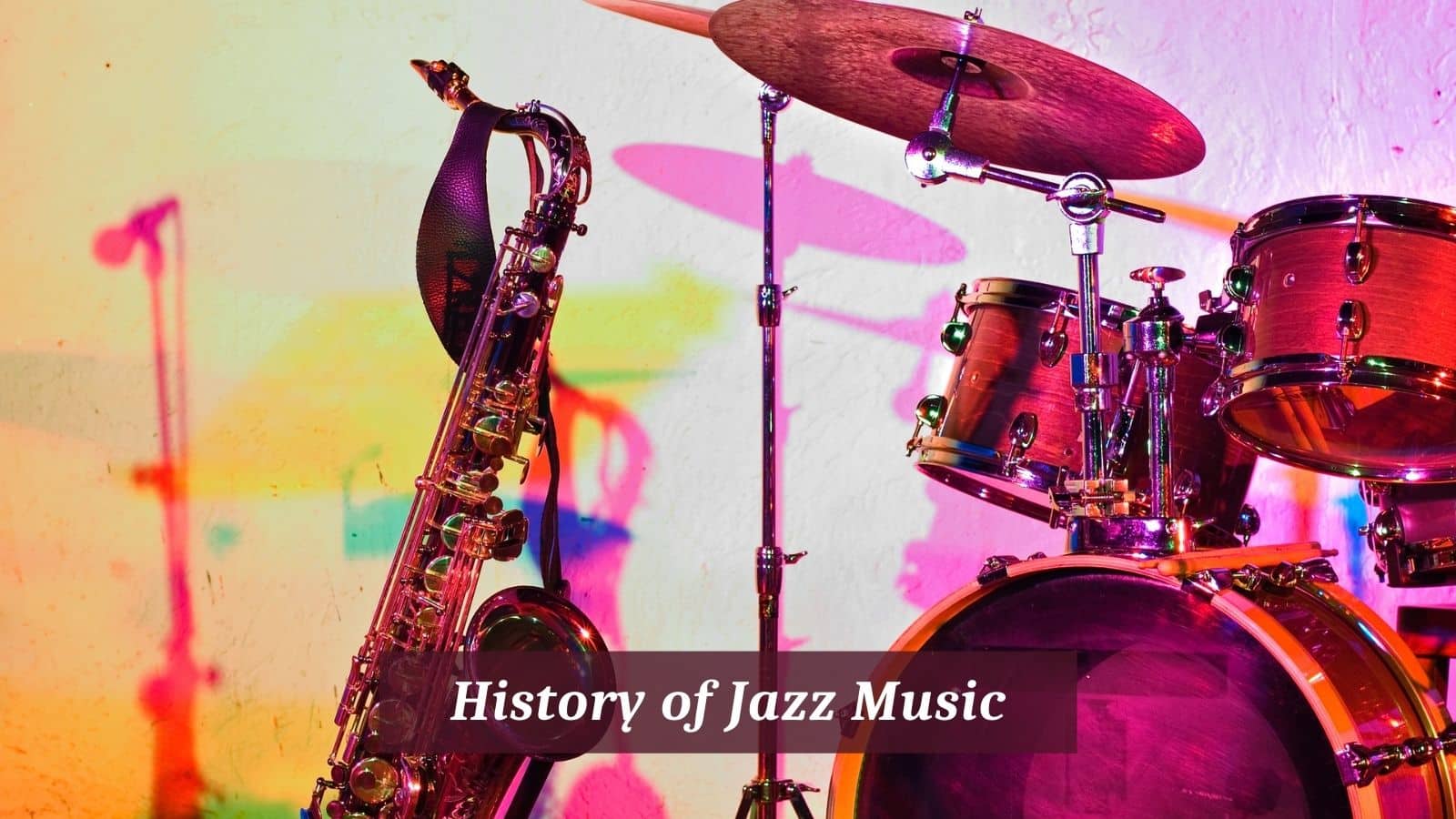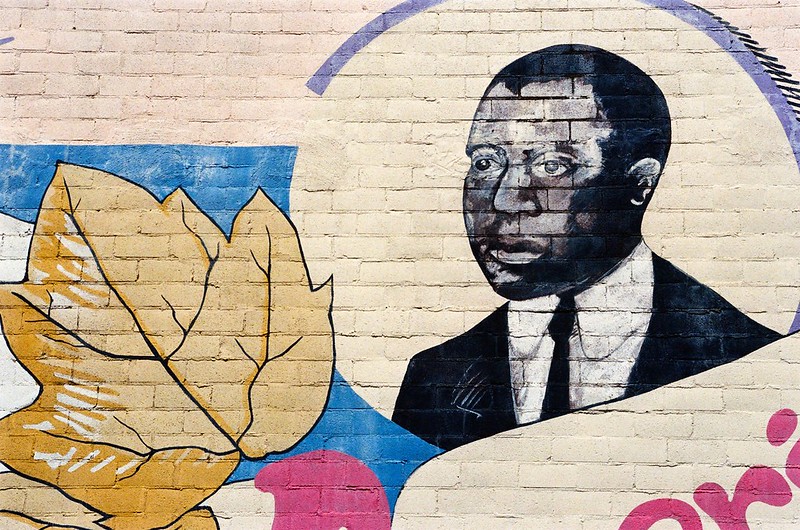
Tracing the origins of jazz is challenging and enlightening. As one of the most popular genres of music, jazz has delighted, fascinated and frustrated people for well over a century.
To learn more about jazz I find it helpful, to begin with, the mid-19th century and The Blues. This is because it is out of blues that jazz music flowed.
History of Jazz Music
Sadly, the blues as a form of music does not have a happy birth. It came directly from the African slaves toiling in the southern states of the USA. Their living conditions were unimaginable, their suffering intense.
They had few avenues open to them to express their feelings, or ways of making their endless striving pass more easily. What they had were their voices. With their voices, they could sing songs to help them make it through each arduous day and let out, at least in part, their oppression.
Blues music was characterised by simple chord patterns, often with a gentle swing, repetitive melodies that used pentatonic or blues scales and lyrics that told of their hardship.
Interestingly, the first mention of the word jazz, or jasm, was a slang word that travels as far back as 1860. As we reach the turn of the 20th century, the essence of the blues was transforming and developing into new sophisticated forms.
This had in part been enabled when slavery had been abolished and finally, the Civil War had come to an end in 1865. This allowed African -American, former slaves, to travel. From New Orleans, where many musicians lived, they spread north taking their music with them.
One key moment in the history of was a result of Scott Joplin. What he achieved, no other musician at the time had managed, or possibly even thought of.
Joplin combined the syncopated rhythms from West African culture and fused them with the sound of the marching bands. What he created became known as Ragtime. This had two important results.
One was that he brought the music of black musicians into the world of the white majority and made it acceptable. The second was that Joplin created a style of music that was extremely popular (and still is), and opened the doors for jazz.
At the same time as Joplin, you find the start of Dixieland Jazz in New Orleans. Some prefer to call it Traditional jazz, but the music is essentially the same. In 1917 the first recordings of this early jazz style emerge.
Typically, the music would have sounded close to the ragtime of Joplin’s work, played by both white and black musicians. At this time, they would not have been allowed to perform together.
The banjo or occasionally piano would have kept the rhythm and chords going with the string bass or sousaphone carrying mostly the root notes of the chords.
Melody instruments include cornet, trumpet, saxophone, trombone and clarinet. Dixieland travelled north to Chicago as the 1920s sped onwards where jazz evolved into a faster-paced style.
The 20s and 30s were the starts of the swing era. Jazz had made its way into the blood of numerous musicians and was there to stay. Big Bands began to form from the more modest Dixieland outfits.
This brought about famous bands led by big names of jazz like Count Basie, Tommy Dorsey, Benny Goodman and Duke Ellington. These bands included sections and could number up to thirty performers; four saxophones, four trumpets, three trombones, piano, string bass, drum kit and later electric guitar.
The music through this era becomes increasingly sophisticated in its structure, harmony and rhythms. Leaders like Ellington and Goodman were virtuoso performers, highly skilled and always on the edge of something new.
Ellington’s compositions and arrangements were nothing short of genius. Swing bands toured the world as the Second World War raged.
The early 1940s was the pinnacle of swing and new recording technology allowed for these bands to be properly recorded. Radio broadcasts regularly featured the Big Bands and jazz migrated into Europe.
As is so frequently the way with the arts, what one era brings to life the next moves away from.
By the mid-1940s some notable artists such as Charlie Parker, John Coltrane, Bud Powell, Dizzy Gillespie, Clifford Brown and Thelonious Monk were forming smaller groups and distancing themselves from the big bands.
This was the beginning of Bebop. Bebop took jazz to another level. This was the music of sheer virtuosic intensity. Traditional chord progressions transform to include unorthodox substitutions creating harmonic ambiguity and allowing performers to improvise and explore at liberty.
Trumpeter Miles Davis cut his teeth in Bebop jazz. In the 1950s jazz was evolving further. Hard Bop had enjoyed its time in the limelight as an extension of Bebop, but Davis moved in a different circle; Modal Jazz.
One of the paramount albums of the decade was Davis’s 1959 Kind of Blue. Modal jazz adopted a radically new, simpler approach to the genre.
So What for instance comprises only two chords (Dm7 – Ebm7) with players given modal scales on which to improvise. It was a far more relaxed, moody kind of jazz that looked back to post-war Cool Jazz.
What the 60s brought in terms of innovation was something called free jazz. To many ears, this type of music sounds like a complete free for all, but there was a method to the apparent madness.
Exponents like Charles Mingus, Ornette Coleman, Sun Ra and John Coltrane developed this style. It threw out most of the earlier jazz conventions in favour of almost complete autonomy for each player.
Free jazz took influence from Africa, India and Arabia and organically melded them into intense jazz. One famous recording of Coltrane and ten fabulous musicians from 1965 was called Ascension. For many, this is the high point of Free Jazz.
As the 70s and 80s come along jazz continues to evolve and develop. Latin Jazz and African Jazz styles come to the public ear. Cuban rhythms fuse with Brazilian rhythms that in turn merge with the music of Africa. One very fine example of the African influence is in Horace Silver’s 1965 African Queen.
The influence of these cultures moved jazz into some rich territory allowing performers to stretch the boundaries of jazz.
Other styles of jazz equally blended diverse genres to create ever more exotic versions of the original jazz concepts. Acid Jazz, Jazz Funk and even Punk Jazz grew through the 80s leaving the way open for future innovation.


Wonderful primer, would have liked to see Congo Square mentioned and maybe a bit on Spiritual Jazz as a sub genre.
Nice summary, well done.